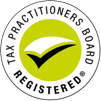NEW SUPERANNUATION GUARANTEE ENFORCEMENT LEGISLATION
The government has introduced a new bill that makes a number of changes pertaining to superannuation guarantee employer obligations and single touch payroll.
According to ATO estimates, there is purportedly $2.85 billion in unpaid superannuation each year! As a result, the government is proposing to increase penalties on “unscrupulous” employers by modernising the enforcement of the superannuation guarantee.
The bill introduces increased consequences for employers failing to comply with their superannuation guarantee obligations, giving the ATO the ability to apply for court ordered penalties, including up to one year’s imprisonment.
Additionally, the bill proposes to extend single touch payroll to cover all employers from 1 July 2019
HOLIDAY HOME RENTALS
The ATO are setting their sights on the large number of mistakes, errors and false claims made by rental property owners who use their own property for personal holidays.
While its fact sheet “Focus on Holiday Homes” confirms that the private use of holiday homes by friends and family is entirely legitimate, the ATO states that such use reduces a taxpayer’s ability to earn income from the property, and therefore impacts on (i.e. reduces) the amount of claimable deductions.
As a result, the ATO has reminded holiday home owners that:
- They can only claim deductions for a holiday home with respect to periods it is genuinely available for rent.
- They cannot place unreasonable conditions on prospective tenants/renters, set rental rates above market value, or fail to advertise a holiday home in a manner that targets people who would be interested in it and still claim that the property was genuinely available for rent.
- Where a property is rented to friends or relatives at ‘mates rates’, they can only claim deductions for expenses up to the amount of the income received.
- Property owners whose claims are disproportionate to the income received can expect greater scrutiny from the ATO.
TRAVEL EXPENSES RELATED TO RENTAL PROPERTY
While travel undertaken in relation to a residential rental property is a legitimate expense traditionally claimed by many property owners, the government has become concerned that some taxpayers have been claiming rental property travel deductions without correctly apportioning their travel expenses.
As a result, under recent changes, travel expenditure incurred by a taxpayer (other than an excluded taxpayer) from 1 July 2017 is no longer deductible where it:
- is incurred in gaining or producing the taxpayer’s assessable income from the use of residential premises as residential accommodation: and
- is not necessarily incurred in carrying on a business by the taxpayer for the purpose of gaining or producing their assessable income.
Unfortunately, there are very few exceptions to this new restriction. However, some people have queried whether the new rule also excludes a tax deduction for travel to see a tax agent (i.e. when preparing the 2018 income tax return in relation to a residential rental property’s income and expenses).
Fortunately, the new restriction on deducting travel expenditure in relation to a residential rental property does NOT apply where travel expenses are incurred to visit a tax agent for the purposes of preparing and lodging an income tax return that included rental income and deductions.
This is because these expenses relate to the management of a taxpayer’s income tax affairs (which are deductible under S.25-5 of the ITAA 1997), and not to gaining or producing assessable income from the use of the residential premises for residential accommodation.
SINGLE TOUCH PAYROLL READINESS
Employer clients need to do a head count to determine if they had 20 or more employees (including both full-time, part-time and even certain casual employees) as at 1 April 2018.
This is because, on 1 July 2018 employers with 20 or more employees need to start reporting ‘year to date’ figures under Single Touch Payroll for salary and wages, PAYG withholding and superannuation liabilities on each pay event.
To assist, the ATO has reminded tax practitioners that is has developed a number of resources available on its website, including factsheets, checklists, webinars and even a tax Practitioner’s Pack entitled ‘Single Touch Payroll – Information for tax practitioners and their employer clients’.
Employers will need to ensure that their payroll software is single touch payroll compliant.
TAX RELATED SCAM ALERTS
The Tax Practitioner Stewardship Group has reminded tax practitioners that they can keep updated and check for the latest ‘tax scam’ alerts on the ATO website.
For example, the ATO has recently issued a waring about scammers impersonating the ATO and demanding cryptocurrency (such as Bitcoin) as a form of payment for fake tax debts.
Incredibly the ATO has reported that it is aware of over $50,000 being paid in Bitcoin to scammers with respect to some of these fake debts!
Additionally, while the ATO is obviously concerned about scammers moving to adopt cryptocurrencies, it has advised that taxpayers and their advisers should remain vigilant for other versions of the fake tax debt scam.
Similar scams have involved fake ATO demands for direct deposits into third-party bank accounts or payment of tax debts via iTunes cards or with pre-paid Visa gift cards.
The ATO has also reported that, in 2017, the ATO received over 80,000 reports of scams, with taxpayers reporting almost $2.4 million lost to scammers claiming to be from the ATO.
Additionally, the ATO has reported that it has increased concerns about taxpayers being tricked into sharing personal information such as their Tax File Number with scammers.
If you believe you are being targeted by such scams, or you would like to confirm the legitimacy of an ATO call or letter, the best contact number with the ATO for these purposes is 1800 008 540.
Having said that it is probably safe to say any request to pay a tax debt in Bitcoin or iTunes cards can simply be ignored!
VERBAL REQUESTS FOR A DIRECT DEBIT PAYMENT PLAN
The ATO has reminded tax practitioners that they can now verbally request (i.e. over the phone, rather than by submitting a form) to set up a direct debit payment plan for their client’s tax debts for income tax, business tax, fringe benefits tax and superannuation guarantee.
ATO’S FOCUS AREAS
The Commissioner of Taxation, Mr Chris Jordan, highlighted the areas in which the ATO has recently increased its focus, including:
- undeclared income;
- individual’s unexplained wealth or lifestyle;
- incorrectly claimed private expenses;
- unpaid superannuation guarantee; and
- cash-only businesses and those with low usage of merchant banking facilities with black economy visits to over 2,600 businesses across 8 locations in 2017.
The Commissioner also highlighted ongoing ATO concern with respect to the predicted work-related expense claim gap which, at least by the regulator’s estimates, could amount to being greater that the large corporate tax gap of $2.5 billion of lost revenue.
ALP PROPOSAL – FRANKING CREDITS TO BE NON-REFUNDABLE
While being far from implemented law, the shadow treasurer has recently announced that, if elected, a Labor Government will seek to end cash refunds of excess imputation credits for individuals and superannuation funds (including SMSFs).
Such refunds have been estimated to cost the government’s annual ‘bottom line’ $5 billion per year.
Effectively this would mean that franking credits would be non-refundable and could only be used to reduce any actual tax liability of the relevant taxpayer.
If elected, Labor would intend that the proposed reform would apply from 1 July 2019.
GST ON LOW VALUE GOODS –LCR 2018/1
In the first of these rulings, the ATO discusses the changes where from 1 July 2018, GST starts being payable on offshore supplies of low value goods that have been purchased and brought into Australia.
Broadly, as it currently stands, no GST applies to imported goods as long as the customs value of what is being imported does not exceed $1,000.
From 1 July 2018, this $1,000 low value threshold will disappear.
As a result, LCR 2018/1 discusses exactly when a supply of low value goods will be connected with Australia in order for a taxable supply to occur, as well as discussing:
- how to calculate the GST payable on a taxable supply of low value foods;
- the rules to prevent double taxation of the goods, and to correct errors of deal with changes in the GST treatment of a supply; and
- how the rules interact with other rules under which supplies are connected with Australia.
The ATO has issued a fact sheet on its website entitled ‘GST changes for Australian retailers who use drop shipping’.
Drop shipping in this context refers to the sale of goods located overseas at the time of sale sent directly to consumers in Australia from the overseas source. The fact sheet reminds such taxpayers that from 1 July 2018, Australian retailers should treat these sales the same as other domestic sales and apply GST at the point of sale.
NO NEED TO ACQUIRE ANOTHER MAIN RESIDENCE FOR ‘DOWNSIZER CONTRIBUTIONS’
From 1 July 2018, individuals aged 65 or over may use the proceeds from the sale of an eligible dwelling that was their main residence to make superannuation contributions (referred to as ‘downsizer contributions’) up to a maximum of $300,000 per person (i.e. up to $600,000 per couple), without having to satisfy the age or gainful employment tests that usually apply.
This measure was announced in the 2017-2018 Federal Budget and aims to provide an incentive for older Australians to ‘downsize’ their home.
This, in turn, is expected to reduce pressure on housing affordability by freeing up stocks of larger homes for growing families.
Importantly, it should be noted that here is no requirement for an individual to actually ‘downsize’ by acquiring a smaller property, or even to acquire another property at all.
In this regard, all that is required is that the individual (or their spouse) ‘downsizes’ by selling their main residence.
The individual can then move into any living situation that suits them, such as aged care, a retirement village, a bigger or smaller dwelling than the one sold, a rental or living with family.
Also, the property sold does not need to have been the individual’s (or their spouse’s) main residence during their entire ownership of it, provided the property was owned for at least 10 years and was their main residence as some time during the ownership period.
Therefore, the sale of an investment property that at one stage was their main residence may enable an individual (or their spouse) to make downsizer contributions.
The new ‘downsizer contributions’ measure provides opportunities for retirees looking to boost their retirement savings, particularly in light of the recent superannuation reforms affecting the contributions caps.




